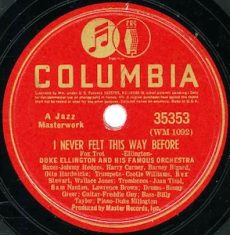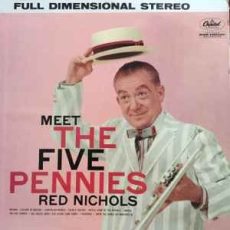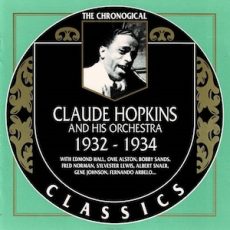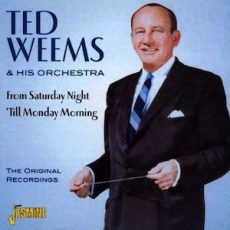
Daily Dose Of Jazz…
Wallace Leon Jones was born on November 16, 1906 in Baltimore, Maryland. He began playing trumpet in local Maryland bands such as Ike Dixon’s Harmony Birds and Percy Glascoe’s Kit Kat Orchestra early in his career.
He moved to New York City around 1935 and went to work with his cousin Chick Webb. He then joined Willie Bryant’s ensemble and recorded with Putney Dandridge and Duke Ellington, the latter where he was credited on clarinet, trombone and trumpet from 1938 to 1944.
He appeared in several sound films with Ellington, including 1943’s Cabin in the Sky. After this association, Wallace recorded with Ellington again in 1947, and also worked with Benny Carter, Snub Mosley, and John Kirby, but left music by the end of the Forties.
Trumpeter Wallace Jones died on March 23, 1983 in New York City.
More Posts: history,instrumental,jazz,music,trumpet

Daily Dose Of Jazz…
Rollie Culver was born Rolland Pierce Culver on October 29, 1908 in Fond du Lac, Wisconsin. His first entry into professional entertainment was as a tap dancer, but after 1930 he concentrated on drumming.
He went on to play in the territory band of Heinie Beau for most of the Thirties, then in 1941 he began playing with Red Nichols. He drummed behind Nichols for more than twenty years, working with him right up to his death in 1965.
Throughout the rest of his career he played with Jack Delaney and Raymond Burke, and as a session musician for film soundtracks.
Drummer Rollie Culver died on December 8, 1984 in Culver City, California.
More Posts: drums,history,instrumental,jazz,music

Daily Dose Of Jazz…
Sylvester Lewis was born on October 19, 1908 in Kansas City, Missouri and played locally as a college student around the city in the 1920s. His first major tour was with a traveling revue called Shake Your Feet, where he met Herbie Cowens. This meeting led to him joining the Cowens group, playing at the Rockland Palace in New York City in 1928.
He recorded with Jelly Roll Morton in New York the same year. After a stint with Aubrey Neal in 1929, Lewis joined Claude Hopkins’s band, playing with him from 1930 to 1936 and recording with him extensively between 1932 and 1935.
Leaving Hopkins, he performed in Billy Butler’s orchestra for the theater show Rhapsody in Black and played in Noble Sissle and Eubie Blake’s Shuffle Along in 1941. Sylvester led his own band for troop tours of the Pacific during World War II, and recorded with Roy Eldridge in 1946 after his discharge.
He began studying the Schillinger system in the late 1940s, but gave up music entirely after 1949 and spent the rest of his life working for the New York City Subway.
Trumpeter Sylvester Lewis died in 1974 in New York City.
More Posts: history,instrumental,jazz,music,trumpet

Daily Dose Of Jazz…
Fred Norman was born on October 5, 1910 in Leesburg, Florida. After attending Howard University, in Washington, DC he joined the Claude Hopkins band in 1932. Touring with the group as both a trombonist and singer for much of the 1930s, he notably recorded his own composition, Church Street Sobbin’ Blues, as the trombone soloist with the band in 1937 for Decca Records. He also appeared in short films with the Hopkins band during the 1930s.
Moving away from performance in 1938 he went on to work as a full-time music arranger. The late Thirties and 1940s saw him writing arrangements for Bunny Berigan, Tommy Dorsey, Benny Goodman, Lionel Hampton, Gene Krupa, Teddy Powell, Artie Shaw, Charlie Spivak, and Jack Teagarden.
In the 1950s he was the music director and arranger for multiple records made by the singers Sarah Vaughan and Dinah Washington. He continued to work as an arranger until his retirement in the 1970s.
Composer, arranger, trombonist, and vocalist Fred Norman died on February 19, 1993 in New York City.
More Posts: arranger,bandleader,composer,history,instrumental,jazz,music,trombone,vocal

Daily Dose Of Jazz…
Wilfred Theodore Wemyes, known to the world as Ted Weems, was born on September 26, 1901 in Pitcairn, Pennsylvania. He learned to play the violin and trombone, and his start in music came when he entered a contest, hoping to win a pony. He won a violin instead and his parents arranged for music lessons, and was a graduate of Lincoln School in Pittsburgh. While still at Lincoln, he organized a band there, initially providing some instruments himself.
As an enterprising young man he reinvested money given him by his teacher and that collected from band members to buy better instruments for the band. His family moved to Philadelphia, Pennsylvania where he enrolled at West Philadelphia High School, joined the school’s band and became its director. Ted went on to the University of Pennsylvania, where he and his brother Art organized a small dance band that became the All American Band. They soon started receiving offers to perform in well-known hotels throughout the United States. They were one of the bands that played at the inaugural ball of President Warren G Harding in 1921.
Going professional in 1923, Weems toured for the MCA Corporation and began recording for the Victor Talking Machine Company. His first #1 hit was Somebody Stole My Gal in early 1924 and recorded for Victor/RCA Victor and their Bluebird Records arm. He then signed with Columbia, and on to Decca. He also co-wrote several popular songs: The Martins and the McCoys, Jig Time, The One-Man Band, Three Shif’less Skonks, and Oh, Monah!, which he co-wrote with band member Country Washburn.
Moving to Chicago, Illinois with his band around 1928, his orchestra charted more success in 1929 and the band gained popularity in the 1930s, making regular radio broadcasts. He would go on to enlist with his entire band into the United States Merchant Marine in 1942, directing the Merchant Marine Band. After the war, with his new-found popularity of the 1938 Heartaches, Decca continued to re-release several of his hits, however, he reaped no benefit as his contract expired while he was in the military.
Weems made front-page news in 1947 when he publicly repaid his debt to disc jockey Kurt Webster, who had revived Heartaches and thus his career. He staged a benefit performance by his band and gave all proceeds going to war veteran Webster. Decca cashed in once again on his new popularity by reissuing another oldie, I Wonder Who’s Kissing Her Now with vocals by Perry Como, which became another major chart hit.
The hits dried up after 1947 but Ted continued touring until 1953 then accepted a disc jockey position in Memphis, Tennessee, later moving on to a management position with the Holiday Inn hotel chain.
Violinist, trombonist and bandleader Ted Weems, who operated a talent agency in Dallas, Texas with his son, and has a star on the Hollywood Walk of Fame, died of emphysema in Tulsa, Oklahoma, on May 6, 1963.
More Posts: bandleader,history,instrumental,jazz,music,trombone,violin




